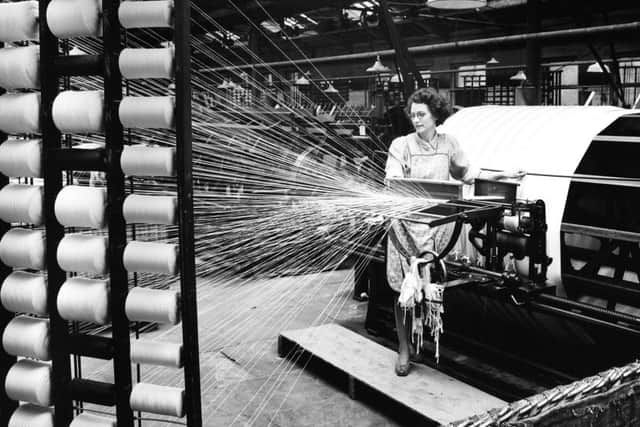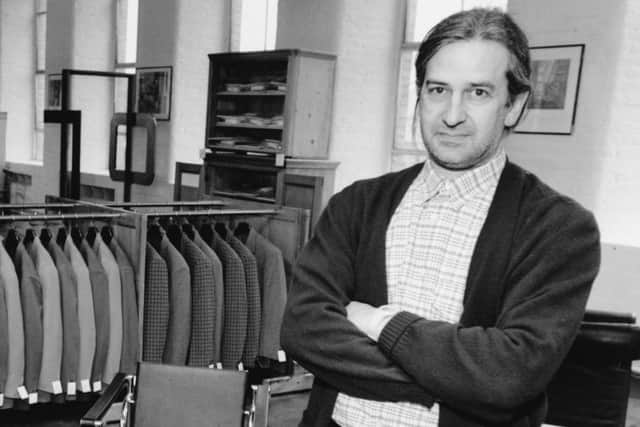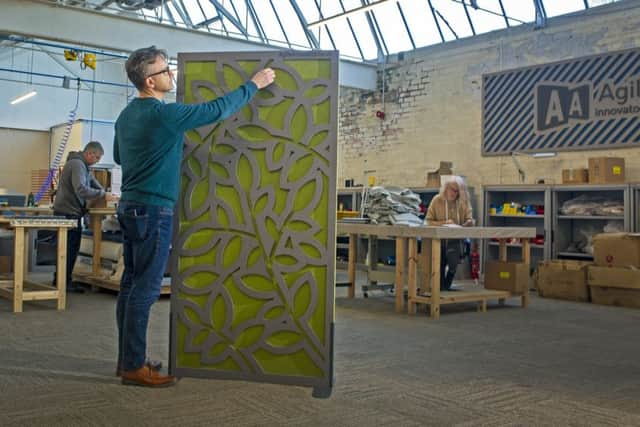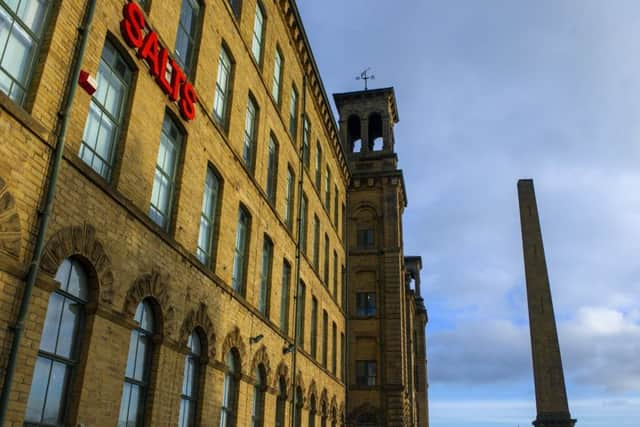Salts Mill - a symbol of industrial heritage that Jonathan Silver transformed into a thriving hub for arts and commerce
And back in the mid-19th century you couldn’t move for them. These cavernous edifices of industrial-age power and prosperity loomed large on the Yorkshire landscape – they were the northern powerhouses of their day long before the concept was even a twinkle in George Osborne’s eye.
They brought wealth and influence to towns and cities in the North and sparked a rivalry between mill owners. In Leeds, Temple Works, home to John Marshall’s flax empire, was inspired by the ancient Egyptian Temple of Horus at Edfu.
Advertisement
Hide AdAdvertisement
Hide AdNot to be outdone, Samuel Lister built Lister Mills in Bradford, which not only dominated Manningham but the Bradford skyline, and still do.


In nearby Saltaire, Bradford textile tycoon Titus Salt went even further, building an entire village to house his workforce. They worked at Salts Mill, which was the world’s biggest factory when it opened in the 1850s.
At the height of its production around 3,000 people worked in the woollen mill, before it finally shut its doors in 1986.
Advertisement
Hide AdAdvertisement
Hide AdIt was bought the following year by Bradford entrepreneur Jonathan Silver who wanted to create a permanent exhibition of artworks by his friend, local lad David Hockney, and today Salts Mill is a thriving art gallery, retail and commerce space and restaurant complex that attracts visitors from around the world.


Robin Silver, brother of the late Jonathan Silver and co-founder, with his wife Patricia, of The Home store based in the mill, believes industrialists like Titus Salt had the Victorian mindset of building something to last. “I think they believed they were building these mills to last forever and if you’re building something like that you tend to put more effort into it and you’re more willing to invest more in it,” he says.
Saltaire has a broad appeal. Some people come to visit the mill, while others want to see the industrial village or marvel at the United Reformed Church.
“One thing that rarely gets mentioned over the past 30-odd years since Jonathan bought the mill is that it is actually a really pretty location,” says Robin. “Even though we’re in Bradford and it’s just three miles from the city centre, you’ve got views of trees, the canal and the park, and the moors looking down on us. Saltaire has always been a place that people came to for a day out, long before the mill became what it is today.”
Advertisement
Hide AdAdvertisement
Hide AdRobin has fond memories of the area from his childhood. “Jonathan and I grew up in Bradford. He had a canoe and he used to paddle up and down the canal and go past Salts Mill when it was still working as a mill. You could hear the clicks and clatter of the looms churning away.”


A century and a half ago, Salts Mill was at the forefront of industrial innovation. “You could say that Bradford has always been in that position. We’re a textile city but it was also a textile engineering city and Keighley, in particular, was a world class leader in terms of design and manufacture of textile machinery. In fact some of the old looms that were made in the 19th century are still churning out fabric in places Bangladesh and Pakistan, which is testament to how well made they were,” says Robin.
That pioneering spirit that existed in the days when Titus Salt strode through the rooms of his capacious mill can be seen in the digital and technology businesses housed here today. “Very early on a chap from a company called Pace came here because he needed production space and one thing Jonathan had was a lot of space,” says Robin. “So they moved in and set up a production line and went from strength to strength.”
Advertisement
Hide AdAdvertisement
Hide AdThis business was taken over by Arris, a large US electronics firm, which last year joined with CommScope to create an innovative communications company that does research and development work in electronic engineering at the mill. There are a host of other innovative firms here, including Radio Design, Cimlogic and AgileAcoustics, whose expertise ranges from wireless technology and software development to bespoke acoustic panels.


The tenants include those global in scale to small independents, many of which have been created by local entrepreneurs. And they are part of this building’s story and its heritage. “They might not be connected but they’re part of Salts Mill and they derive the benefits, and sometimes the disadvantages, of being in a Victorian textile mill that was purpose built in 1853. If you want to be in a modern glass office then this isn’t for you – you can’t be all things to all people and if you try then you usually come unstuck.”
If industry is woven into the fabric of the story of this building, then so, too, is art. “The gallery on the ground floor was the first thing that Jonathan opened. He always wanted that to be the Hockney gallery because of their friendship, but also because he thought it was right and fitting that Bradford should have a Hockney gallery,” says Robin.
“My brother often used to say the link between art and commerce is a very old established tradition. If you think of the Italian Renaissance, the Medicis were a commercial family but they were also art collectors and benefactors. And this wasn’t seen as a conflict of interest – it was almost seen as a responsibility to expend effort and money on non-commercial activities, some of which became very commercial.”
Advertisement
Hide AdAdvertisement
Hide AdThe Silver family has honoured Jonathan’s vision to create a place where art and commerce flourished under one roof. “We want to preserve the building, not because it’s a Grade II star listed building, but for all the things that go on in it today, tomorrow and for years to come.”
For those who work there, Salts Mills is a special place. Hat designer and maker Jen Levet, who runs Jen Levet Millinery, moved into one of the studios in 2017, having relocated back to Yorkshire.


Her family lives near Skipton and she visited the mill when she was growing up. “We used to come for day trips and it was one of my favourite places so it was always a bit of a dream of mine to come and work here but I never thought that I could,” she says. “It’s an inspiring place to work and it’s a wonderful building to go to every day. I like the fact that there are all kinds of different businesses here.”
Advertisement
Hide AdAdvertisement
Hide AdIt’s a sentiment shared by graphic artist Jacky Al-Samarraie who runs The Art Rooms, where she sells her striking range of home and giftware.
She has been based at Salts Mill for six-and-a-half years and has long been drawn to the area. “I’m not from Bradford originally but I’ve lived there since 1984 and for me Saltaire has a special atmosphere that feels different from anywhere else, it’s become quite a creative hub in the last few years. I used to meet friends here for breakfast on a Saturday morning and I knew I wanted to be here, because of the way it made me feel. Being here every day just makes me happy. I can feel myself change when I come here in the morning.
“Yes, there are ups and downs just as nearly all retailers face, it’s not all rosy. But having such a beautiful place to come to each morning is a good start. My studio looks out onto the canal and out towards Roberts Park and sometimes I’ll stand by the window for a minute and soak up the view.
“My premises are where Titus Salt used to entertain his guests and you can still see little touches of the past, the hooks and pulleys, and I feel privileged to be here and be a small part of the mill’s history.”
www.saltsmill.org.uk/